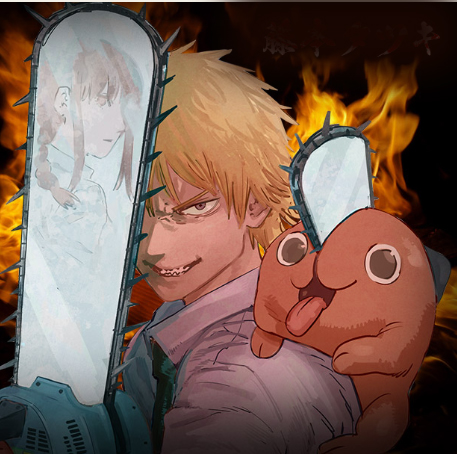Introduction: The Phenomenon of Chainsaw Man
In recent years, the world of manga and anime has witnessed an explosion of interest in series that defy traditional storytelling norms. One such series that has captured the hearts of fans globally is “Chainsaw Man,” created by the brilliant Tatsuki Fujimoto. What is it about this manga that has turned it into a cult phenomenon, captivating audiences from Tokyo to New York? From its unique characters to its gripping narrative, “Chainsaw Man” offers a fresh perspective on themes of fear, desire, and humanity that resonate deeply with people across cultures. This essay seeks to unravel the magic behind the cult craze surrounding “Chainsaw Man” and explore why it continues to enthrall fans around the world.
The excitement begins with the chaotic yet captivating world that Fujimoto has created. Set in a realm filled with devils and demon hunters, “Chainsaw Man” pushes the boundaries of what a typical shonen manga can be. Readers are drawn into a wild ride filled with unexpected twists and a vibrant cast of characters who keep things interesting at every turn. The blend of horror with human emotion creates an irresistible pull that keeps fans coming back for more, eager to see how Denji and his companions navigate the thrilling ups and downs.
Moreover, the global appeal of “Chainsaw Man” lies in its universal themes. Whether you’re from a bustling metropolis or a quiet town, the struggles depicted resonate on a personal level. The desire for freedom, acceptance, and joy transcends cultural boundaries, forging connections among fans. It’s a celebration of humanity, shared through the lens of chaos and supernatural elements, making it a phenomenon that speaks to the heart of a diverse audience.
Dynamic Characters: More than Meets the Eye
At the heart of “Chainsaw Man” is a cast of dynamic characters that are anything but one-dimensional. The protagonist, Denji, is a relatable figure who embodies the struggles of everyday life while also navigating the supernatural chaos that ensues when he merges with his chainsaw devil. Rather than presenting an archetypal hero, Fujimoto introduces us to a flawed, desperate young man who seeks not just freedom but the simple pleasures of life—like eating bread and living in a home. This approach makes Denji appealing to readers who see parts of themselves reflected in his struggles.
As we delve deeper into the story, we meet an array of richly developed supporting characters that contribute to the emotional depth of the narrative. From the fierce and complex Makima to the loyal yet troubled Power, each character brings their own quirks and challenges to the table. Their interactions are electric and filled with tension, prompting readers to ponder their motivations and aspirations. This intricate web of relationships keeps us engaged, creating a thrilling and emotional reading experience that truly resonates.
Finally, the characters in “Chainsaw Man” serve as a mirror reflecting our society’s values and struggles. They grapple with issues such as existential dread, the pursuit of happiness, and the impact of societal expectations—universal themes that resonate deeply with fans of all ages. By presenting characters who are both relatable and extraordinary, “Chainsaw Man” invites readers to explore their own identities, making the series not just a tale of horror and action, but also a profound exploration of humanity.
A Unique Blend of Genres: Horror Meets Humor
One of the most refreshing aspects of “Chainsaw Man” is its ability to seamlessly blend genres, combining elements of horror, action, and dark comedy into a single narrative. This unpredictable combination keeps readers engaged and eager to see what happens next. Just when you think you’ve grasped the tone of the story, it shifts dramatically, plunging into moments of brutal violence followed by absurd humor. This juxtaposition not only keeps the narrative dynamic but also highlights the complexities of life itself—where joy and sorrow often coexist.
The horror elements in “Chainsaw Man” are palpable and expertly crafted. Fujimoto’s depiction of devils is chilling and thought-provoking; each devil represents a different fear or societal issue, making them a reflection of the characters’ inner turmoil. This approach not only heightens the stakes for Denji and his friends but also challenges readers to confront their fears and anxieties in a way that is both entertaining and enlightening. The thrill of horror dances alongside the wit of humor, creating a unique tapestry that resonates profoundly with fans.
Yet, amid the chaos, humor emerges as a vital ingredient that balances the darker themes. The offbeat interactions between characters and the absurdity of certain situations provide comic relief, making the series accessible to a broader audience. Readers find themselves laughing out loud at Denji’s deadpan humor, even as he faces life-or-death scenarios. This perfect blend of horror and comedy is a testament to Fujimoto’s genius, creating a narrative that captivates fans and keeps them hooked until the very last page.
Thematic Exploration: Humanity in the Face of Chaos
At its core, “Chainsaw Man” delves into profound themes that resonate with fans on multiple levels. One of the most prominent themes is the struggle for identity and purpose in a chaotic world. Denji’s journey reflects the quest for meaning in life, particularly in a society where personal fulfillment often feels elusive. As he grapples with his desires—be it love, freedom, or simply a place to belong—readers are reminded of their own journeys and the universal quest for happiness. It’s an adventure that encourages us to keep seeking our own paths, no matter how twisted they may seem.
Additionally, the series tackles the concept of sacrifice and the cost of ambition. Characters face dire consequences for their choices, often forcing them to confront their values and the sacrifices they are willing to make. This exploration encourages fans to reflect on their own lives and the lengths they would go to achieve their dreams. “Chainsaw Man” does not shy away from showcasing the messiness of life, embracing the idea that growth often comes from struggle and hardship. The rollercoaster journey of its characters inspires readers to embrace their challenges with open arms.
Moreover, the theme of connection and relationships is woven throughout the narrative, emphasizing the importance of human bonds in navigating life’s challenges. The friendships formed among the characters are both heartwarming and heartbreaking, showcasing the duality of love and loss. This emotional resonance fosters a sense of community among fans, as they share their experiences and interpretations of these themes, creating a dialogue that extends beyond the pages of the manga itself. It reminds us that we are never alone in our struggles; we are all part of this beautiful, chaotic tapestry of life.
Artistic Expression: A Visual Feast
One cannot discuss “Chainsaw Man” without mentioning its striking artwork. Fujimoto’s unique style is a feast for the eyes, blending dynamic action sequences with detailed character expressions that convey a wide range of emotions. The raw, energetic illustrations capture the gruesome battles and frenetic pace of the story, immersing readers in the world of devils and demon hunters. Each panel is a work of art, meticulously crafted to evoke excitement and dread, drawing fans into a vivid experience that transcends mere storytelling.
The use of intricate line work and bold contrasts enhances the emotional impact of every scene. From the terrifying depictions of the devils that haunt our heroes to the lighthearted moments that highlight their quirks, Fujimoto masterfully balances chaos and beauty. The artwork doesn’t just serve the story; it elevates it, creating an immersive world where readers can lose themselves. This artistic expression invites viewers to interpret each image, triggering personal reflections that resonate beyond the surface.
Lastly, the visual storytelling in “Chainsaw Man” complements its themes perfectly. The contrast of light and darkness in the artwork serves as a metaphor for the struggles faced by the characters. Just as they navigate their fears and desires, readers are taken on a journey through a visual landscape that reflects the complexities of human emotions. It’s a reminder that life is both an adventure and a work of art, encouraging us to appreciate the beauty found within our own chaotic experiences.
As you embrace the excitement of life, remember that every challenge you face is an opportunity for growth and discovery. Each day is a blank canvas waiting for your unique brush strokes—approach it with a heart full of hope and creativity! Keep exploring, keep dreaming, and never forget that your journey, much like Denji’s, is a beautiful adventure in itself!

